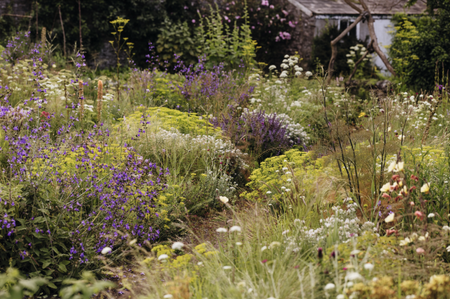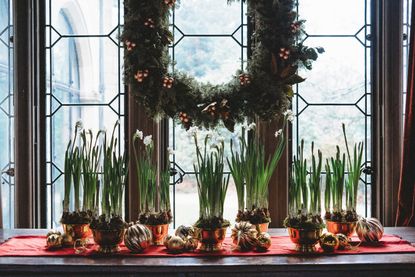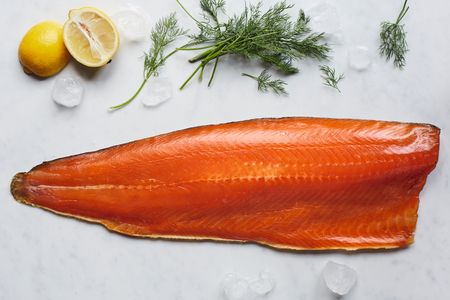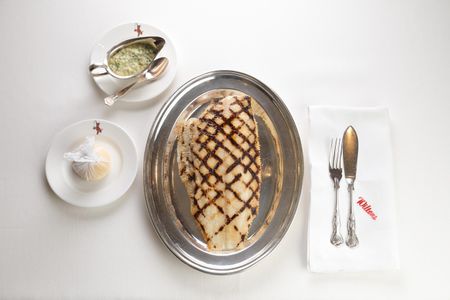-

Best country houses for sale this week
By Country Life
-
-

Name that Christmas film: Country Life Quiz of the Day, December 17, 2025
By Country Life
-

The return of one of Europe's most iconic hotels is just the beginning for Bucharest
By James Fisher
-

'There were 900 people in the queue and I waited three hours, but it was worth it': The Christmas cracker-maker who supplies Britain's most exclusive shops
By Jane Wheatley
-

The Houses of Guinness: A real-life 'Succession' with privileged characters, living extravagant lifestyles 'and revelling in their extraordinary lives'
By Timothy Mowl
-

How posh is your Christmas stocking?
By Sophia Money-Coutts
-

A gift for every interest — and every deadline: The best coffee-table books to give at Christmas
By Amie Elizabeth White
-
Exquisite houses, the beauty of Nature, and how to get the most from your life, straight to your inbox.
People & Places
-
-

I was Jeremy Hunt’s main political adviser and helped put together multiple Autumn Statements and Budgets. This is what I think Rachel Reeves’s Budget means for the countryside
-

What on earth is the person who comes up with Annabels's otherworldly facade displays on? London's most magical Christmas shop displays
-

Who buys flowers in the middle of the night? Boris Johnson, panicked brides, drunk people and London’s wealthiest inhabitants
-

All fired up: 12 of our favourite chimneys, from grand architectural statements to modest brick stacks, as seen in Country Life
-
Property
View all Property-

Best country houses for sale this week
By Country Life
-
-

An immaculate Georgian rectory where the halls really have been decked in boughs of holly
By Toby Keel
-

A picture-perfect home in 'the loveliest market town in North Yorkshire'
By Penny Churchill
-

18 beautiful houses for sale, from a home counties dream to a private island with its own castle, as seen in Country Life
By Toby Keel
-

On the edge of the world, beyond the mainland's most remote village, this self-sufficient dream home is for sale at £395,000
By Toby Keel
-

The dream ski chalet for sale: Be the envy of the entire Trois Vallées
By James Fisher
-

'We’re in the golden era of family life': The rather lovely accidental up-side of the wildly spiralling cost of housing
By Toby Keel
-
Our expert voices
Interiors
View All Interiors-

John Goodall: Restoration is 'an act of recycling', but we need a system that encourages it
By John Goodall
-
-

Making space in a Georgian terraced Chelsea cottage
By Arabella Youens
-

Moths and memories of the Russian Revolution: Why it's worth saving that tired old rug
By Catriona Gray
-

How one family went about creating a welcoming kitchen in one of England's neo-Palladian houses
By Arabella Youens
-

How do you make a 300-year-old Baronial castle fit for modern-day living?
By Arabella Youens
-

Oh, my gourd, it’s Hallowe’en: How best to decorate your home with pumpkins, squashes and more
By Debora Robertson
-

At the Snowdon Summer School, the future of design lies in the traditions of the past
By Giles Kime
-

A derelict school turned into a gorgeous home with 'an interior of harmony and visual éclat'
By John Martin Robinson
-
LIFE & STYLE
View All LIFE & STYLE-
-

How posh is your Christmas stocking?
By Sophia Money-Coutts
-

What do a 19th century earl, Coco Chanel and Harry Styles have in common? A love of cardigans, of course
By Amie Elizabeth White
-

‘I gave her full access to our archives. We never offer that’: The historic Tiffany jewellery that gave life to Guillermo del Toro’s Frankenstein
By Felix Bischof
-

Mystifying Christmas present suggestions that once appeared in the pages of Country Life
By Melanie Bryan
-
COUNTRYSIDE
View All THE COUNTRYSIDE-
-

Is December the best month for bird watching? Exploring the underrated avian delights of a British winter
By Country Life
-

'A teaspoon of living soil contains more creatures than there are people in existence': Unearthing the dirt's vital role in our future on World Soil Day
By Sarah Langford
-

I was Jeremy Hunt’s main political adviser and helped put together multiple Autumn Statements and Budgets. This is what I think Rachel Reeves’s Budget means for the countryside
By Adam Smith
-
Gardens
View All Gardens-

How to create spectacular arrangements for your Christmas table
By Amy Merrick
-
-

There are a billion microbes in a teaspoon of soil. Leaving the leaves to Nature feeds and nourishes them
By Isabel Bannerman
-

What trees taught me about perfect planting — Alan Titchmarsh
By Alan Titchmarsh
-

When it comes to making the perfect garden tool, the past has all the answers
By Mary Keen
-

Exclusive: The King's remarkable resurrection of the gardens and parkland at Sandringham
By Charles Quest-Ritson
-

'A dream of Nirvana... almost too good to be true': The sweet peas of Easton Walled Gardens, and how you can replicate their success at home
By Ursula Cholmeley
-
ART & CULTURE
View all ART & CULTURE-
-

A gift for every interest — and every deadline: The best coffee-table books to give at Christmas
By Amie Elizabeth White
-

Has the secret of Vermeer’s most enigmatic masterpiece finally been revealed? A British art historian’s controversial claim to have uncovered the true identity of 'Girl with a Pearl Earring'
By Carla Passino
-

'Real children like it… I think it frightens some adults, but very few children': 75 years of The Chronicles of Narnia
By Matthew Dennison
-

Power, prestige and passion: Where to see more than 100 of the world’s best dynastic jewels
By Amy Serafin
-
Travel
View All Travel-

What is everyone talking about this week: Would you move to Dubai?
By Will Hosie
-
-

'The ugliness and craziness is a part of its charm': The Country Life guide to Bangkok
By Luke Abrahams
-

The Surrey hotel review: The new kid on New York's Upper East Side
By Rosie Paterson
-

Whodunnit? Le Bristol hotel in Paris already has a resident Birman cat — now it has its own Cluedo game too
By Rosie Paterson
-

Ardbeg House review: Concept design is a tricky business, but this Scottish whisky distillery-turned-hotel proves that it can be done to great effect
By Steven King
-

'The night smells like engine oil… and money': Singapore’s glittering night race paved the way for a new era of city-centre Grands Prix
By Natasha Bird
-
Food & Drink
View All Food & Drink-

Tim Wilson of The Ginger Pig on the perfect Christmas ham
By Jane Wheatley
-
-

East London's salmon smokehouse is full of secrets
By Tom Howells
-

Four festive recipes from the Country Life Archive that have (thankfully) fallen out of favour
By Melanie Bryan
-

Country Life's luxury editor's Christmas gift ideas for foodies, from traditional hampers to nifty kitchen gadgets
By Amie Elizabeth White
-

‘Calf’s brains have a bland, gentle richness that soothes and cossets': Tom Parker Bowles on the joys of eating offal
By Tom Parker Bowles
-

A paprika-spiked goulash recipe to keep you warm as the nights draw in
By Tom Parker Bowles
-

What is everyone talking about this week: Is the Golden Age of fine dining over?
By Will Hosie
-







